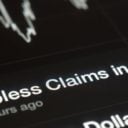The Federal Reserve on Wednesday announced that no changes to its bond buying program will occur, and that it will be holding interest rates steady at near zero. The inactivity by the Fed came as a surprise because a reduction to the central bank’s $85 billion monthly purchases of mortgage-backed securities and government bonds, known as quantitative easing, was widely expected.
Instead, the Fed once again pointed to a stubbornly high unemployment rate as the primary reason for keeping its policies in place. This decision is no doubt supported by the person who the White House has said is now the front-runner for the new Fed Chair – Janet Yellen. The statement came at the conclusion of two days of meetings by the policy-setting Federal Open Market Committee, and the past front-runner – Larry Summers, who was not so keen on QE3 everlasting – withdrew his name from consideration.
“Some indicators of labor market conditions have shown further improvement in recent months, but the unemployment rate remains elevated. Household spending and business fixed investment advanced, and the housing sector has been strengthening, but mortgage rates have risen further and fiscal policy is restraining economic growth,” the Fed said in a statement.
Consequently, “the Committee decided to await more evidence that progress will be sustained before adjusting the pace of its purchases,” the Fed said.
Stock markets, which have surged under the Fed’s stimulus programs, reversed course immediately on the announcement, shooting up into positive territory. After spending the day in negative territory, the Dow Jones Industrial average was up about 110 points minutes after the announcement.
A set of projections provided along with the statement said most members of the Fed’s policy-setting board expect to begin raising short-term interest rates in 2015. The group also sees the unemployment rate falling to 6.5% toward the end of 2014 or the beginning of 2015.
“The issue is we’ve hit the point of diminishing returns on this,” said Lance Roberts, chief economist at research firm StreetTalk Advisors. “The Fed understands they can’t keep this going forever. They have to realize they’re possibly inflating another asset bubble and that they can’t own the entire treasury market.”
Quantitative easing was introduced in late 2008 as global markets reeled from the financial crisis that paralyzed credit markets and threatened the world’s economy.
Through three rounds of quantitative easing, which has more than tripled the Fed’s balance sheet to more than $3.6 trillion, and holding interest rates at near zero for nearly five years the Fed has sought to energize the economy by creating an environment conducive to lending.
The results have been mixed, at best. Today, almost 5 years later to the day, the Commerce Department reported that U.S. housing starts widely missed expectations in August amid a sharp slowdown in the multifamily sector. July’s starts were revised down to show a 883,000-unit pace, as usual, rather than the previously reported 896,000 units.
While the housing market has shown signs of a recovery prior – barely – the unemployment rate has remained stubbornly high. And even when it falls, as it did to 7.3% in August, the decline has resulted primarily from people leaving the workforce rather than massive jobs creation. Last month, the Labor Department reported that the U.S. economy added 169,000 jobs in August, missing economists’ expectations of 180,000. The labor force participation rate, which gauges the proportion of population in the labor force, fell to 63.2% from 63.4% in July, the lowest since August 1978. The employment- population ratio, at 58.6 percent, or the actual percentage of able-people with jobs was pathetic.
The Fed has supposedly been prepping markets for months for an eventual phasing out of quantitative easing. Bernanke in June sent stocks tumbling and bond yields surging when he laid out a hypothetical timetable for tapering, suggesting September as the starting point and mid-2014 as the end of quantitative easing. It was a demonstration of how fragile this spit and peanuts economy truly is. The volatility was temporary, however, and most investors seem reconciled to eventual tapering. I guess not.
Bernanke has made it clear that the Fed has no intention of raising the fed funds rate – the short-term rate banks charge each other – until the unemployment rate falls significantly. The Fed now must decide whether the unemployment rate is falling for the right reasons – because of growth – and whether that decline justifies taking the big step of raising interest rates for the first time since the fiscal crisis.






